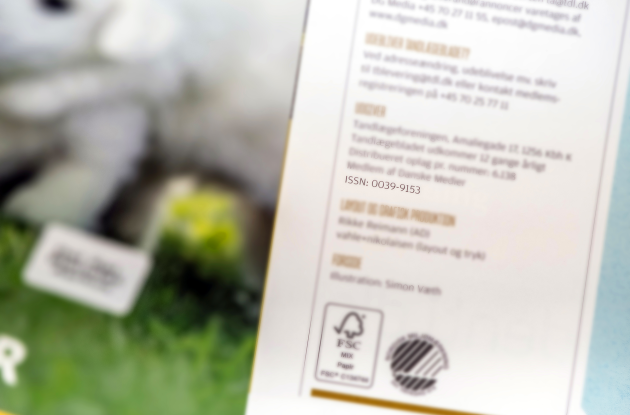Practical information on ISSN, barcodes and EAN
Read about the structure of ISSN, barcodes and conversion to EAN.

Photo: Thomas Søndergaard
About ISSN
The structure of the number system
ISSN consists of eight digits, the last of which is a control digit. ISSN must always be written in two groups, each of which consists of 4 digits with a hyphen in between and with the letters "ISSN" in front of the number groups as follows: ISSN 1234-5679.
The eighth digit is a control digit and has the function of revealing any potential miswritten numbers. The control digit is considered an essential and inseparable part of the number and is calculated on the basis of the other 7 digits according to "modulus 11 with weights 8-2". In cases where the calculations give control digit 10, use Roman numerals X instead.
ISSN is only an identification symbol, and unlike ISBN, ISSN has no other purpose than to be a unique identification of a periodical.
Placement of ISSN in the publication
The ISSN assigned to a printed periodical must be printed on each booklet with the letters ISSN in front.
The number should be printed in a visible place, preferably in the upper right corner on the front of the cover. Especially in the case of journals.
Other suitable locations are on the back of the cover or in the colophon.
If the publication also has an ISBN, e.g. a year of an annual publication, both numbers must be printed in the same place, each with its own prefix. ISSNs assigned to CD-ROMs or floppy disks are placed both outside the CD-ROM or floppy disk as well as inside the file.
ISSNs assigned to web publications are placed in the electronic colophon.
About barcodes with ISSN/EAN
Barcodes for periodicals
Barcodes help publishers and resellers to quickly get an overview of sales data, demand, et cetera.
The article number/EAN can be generated from the ISSN (International Standard Serial Number), which is given to newspapers, magazines, yearbooks and series (correspondingly ISBN is given to books). The international organisation ISSN Network, which administers the ISSN allocation, has agreements with the international product code organisation EAN (European Article Numbering) on a free conversion of ISSN to EAN.
Technical information on EAN calculation, printing, scanning and use can be obtained from GS1 Denmark.